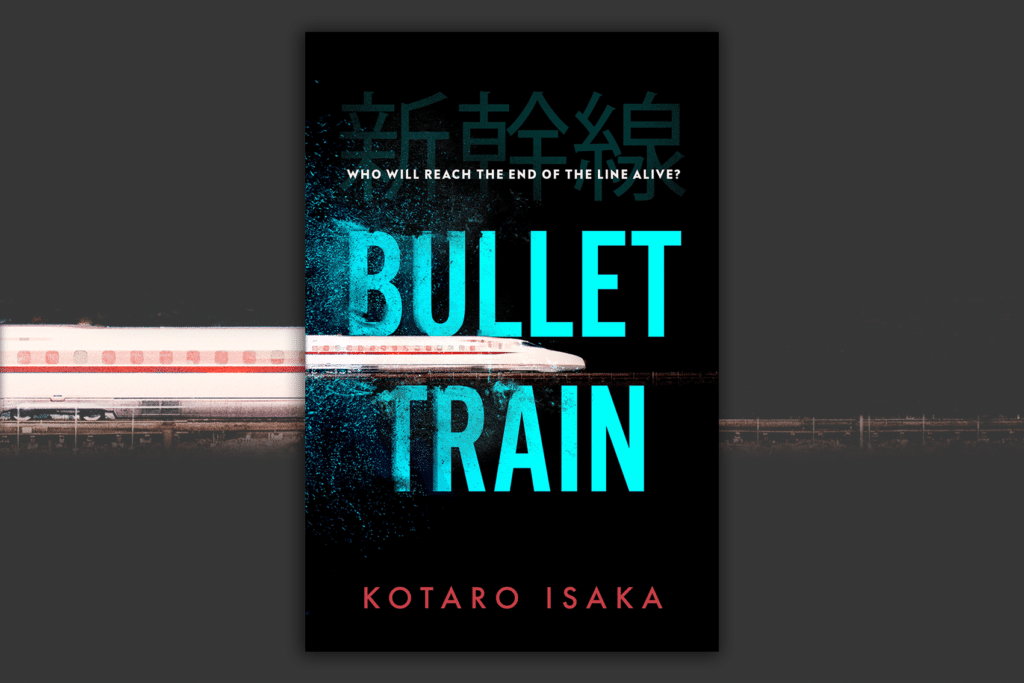Books
Bullet Train: translating the thriller experience
We spoke to Bullet Train translator Sam Malissa about preserving atmosphere, pace and suspense when translating a thriller.
When I translate, the first pass through is a kind of automatic translation, without thinking about style too much. The goal is just to get words on the page that feel as I’m writing them the way the words I’m reading feel, but without agonizing over it too much. Some phrases or sentences transfer over without much friction and others present more of a challenge, branching off into several different possibilities. In these cases I just jot down two or three or four of those different directions and come back to it on the next pass.
On the second time through, I resolve those multiple options in line with what feels right for the rest of the piece. I also play a kind of translational sudoku to avoid repetition of words and sentence structures, where I make changes in adjacent sentences so that the whole paragraph or section balances out and has both consistency and variety. Sometimes I find I’ll get a sentence to a place where it feels great but then realize that it’s too similar to a nearby sentence, so I have to look at both together to see where I can adjust, adding here and subtracting or changing there.
After that cleanup phase, I go through the translation in parallel to the Japanese original, to make sure I haven’t settled on any choices that don’t make sense for the whole, or even left out an entire line (which has happened, so it’s best to check!).
Finally, in what often feels like the hardest phase, I put away the Japanese original and just work on tweaking and polishing the translation. It’s a bit of a leap of faith doing this, but at a certain point I need to treat the translation as a text in its own right, intimately related to the original but also independent of it.
For Bullet Train, there were a few considerations particular to the thriller genre. First of all I decided to set the English in the present tense, to convey the pace and immediacy of the action. In Japanese fiction, the prose can toggle between completed actions and uncompleted actions – not quite past tense and present tense, but those are the only two ways to render it into English. Going back and forth between the two in English can make it feel pretty disorienting and introduce an experimental vibe that the Japanese doesn’t have, so unless the piece is really playing with time, I always choose one based on what feels most appropriate for a given text.
Also related to pacing, I decided to use comma splices here and there throughout the text to keep up the sense of breathlessness and urgency.
Bullet Train also has a cast of vivid characters who inhabit the criminal underworld, and there was a particular challenge to establish their shared vocabulary and outlook while keeping their characters distinct. They’re all different from one another – Kimura, the retired muscle-for-hire with a vendetta; Lemon and Tangerine, the pair of killers who everyone thinks are twins but who couldn’t be more different; Nanao, the world’s unluckiest assassin, who is quite skilled but whose jobs all seem to go haywire; and the Prince, a sociopathic, diabolical mastermind who happens to be fourteen years old. But at the same time that they’re all unique, they need to be set apart from average citizens by the special words they use and the general criminal outlook they share. This was a matter of tone and lexicon – settling on terms they all use, like “professionals,” “the business,” “rough stuff,” things like that.
This book, like some others by Isaka, has lots of little non-sequitur details that seem to be unconnected but come back around to play a role later in the story, often in a kind of domino effect. A snippet of overheard news, the contents of someone’s bag, an apparently random memory – it’s like a Rube Goldberg machine made of Chekov’s guns. When choosing the words to convey these details in English, the trick was to make them distinctive enough to be memorable when they come back into play later, but not make it too obvious that it gives it away.
As for things that are especially tough to translate from Japanese into English, I’m not a big believer in the notion of untranslatability. I think there’s almost always a way to communicate something in the receiving language, it’s just a question of economy: if the phrase in question is two words in Japanese, but it takes twelve words to explain it in English, then let’s call that “less easily translatable.” But still translatable. If I can’t get the whole idea into one phrase or sentence in a way that feels right, I’ll look for an opening in a nearby sentence to fill out the rest of the meaning that spilled over. And when it comes to things that are highly culturally specific, like a kotatsu – a table with a heating element that you put your legs under to keep warm in the winter – it’s a case-by-case call whether to use the word in Japanese because it can be understood in context or to gloss it in English. But nowadays, with the ease of access to online search, I feel like it’s easier than it used to be to use the Japanese for things like food or objects.
Read a chapter of Bullet Train by Kotaro Isaka, translated by Sam Malissa, here.



Please note: Moderation is enabled and may delay your comment being posted. There is no need to resubmit your comment. By posting a comment you are agreeing to the website Terms of Use.